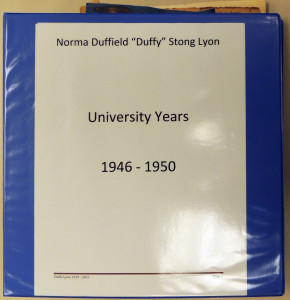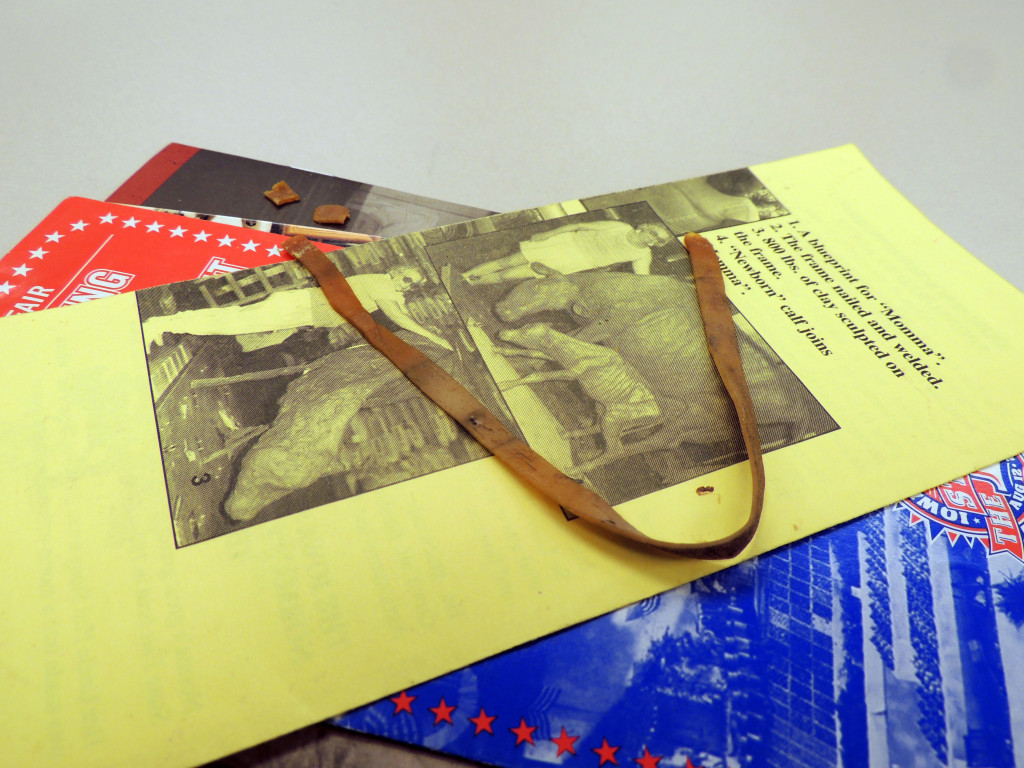Behind the Scenes: Processing the Butter Cow Lady’s Papers
Rosalie Gartner
In December 2017, my colleague Brad posted about an exciting new collection that was donated to SCUA—the papers of Norma Lyon, aka the Butter Cow Lady. There is a lot that happens behind the scenes before a collection can be used by researchers, which I hope to shed some light on here.
After a collection is donated, I spend some time getting to know it by looking through the actual collection as well as any paperwork the donor has filled out. Some of the things I’m looking for are as follows:
- any unique formats that require extra attention or special supplies (like scrapbooks or really large posters)
- anything that isn’t in very good condition and might need immediate attention (like a book with the cover coming off)
- whether or not the collection came organized in any way
- if there’s anything in the collection we might need to restrict access to (like medical or educational records)
- the overall complexity of the collection
Once I feel like I’ve gotten to know the collection, I create what’s called a Processing Plan. This is basically a set of instructions for how the collection should be arranged and all the things we need to do in order to make the collection easy to use by a researcher. I always make sure to get a second opinion on these plans to make sure I’m following the wishes of the donor as well as professional standards. After everyone agrees and approves the plan, the collection is ready for processing.

Processing is exactly what it sounds like—taking an unorganized, sometimes unusable thing and making it available for researchers to use easily, which can be very time-consuming. Processing is also when we take materials out of harmful storage conditions and put them into safer housings to preserve them. For example, did you know 3-ring binders eventually degrade and can cause permanent damage to photos, or that rubber bands break down and stick to pages? We make sure to remove things like that.

My job doesn’t end with processing though. Once that step is complete, the collection needs to be described so researchers can find it—so I create a finding aid. A finding aid is a guide to the collection with all the information we think a researcher would need. The goal is to make sure anyone looking at it will know what is in the collection and decide whether or not they want to look at it. We follow a lot of different standards to make sure finding aids are consistently done and as easy to use as possible. The finding aid goes through the same review process by co-workers before it’s available in CARDinal, our public catalog.
About this entry
Original Post: Behind the Scenes: Processing the Butter Cow Lady’s Papers
Publication Date: April 24, 2018
References
- Iowa State University, Norma Lyon Papers, RS 21/7/280, Iowa State University Library Special Collections and University Archives.

